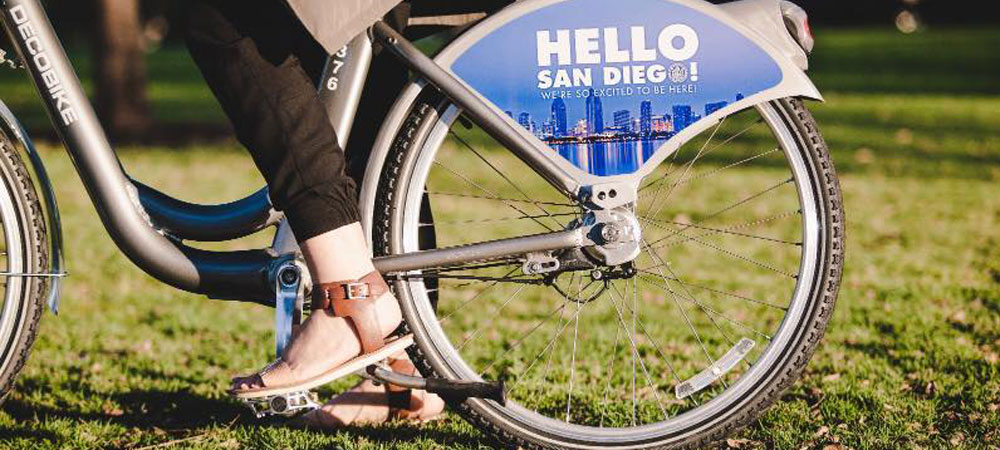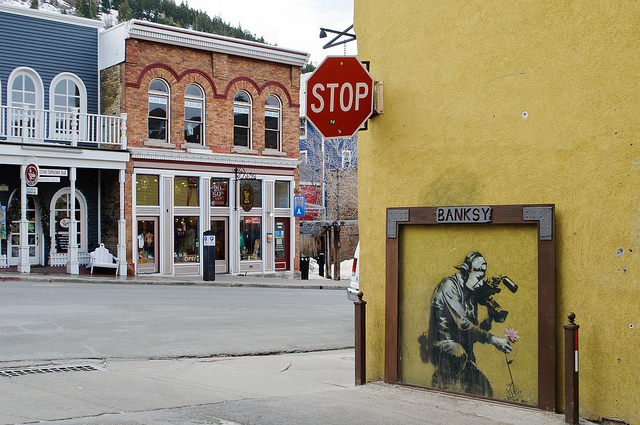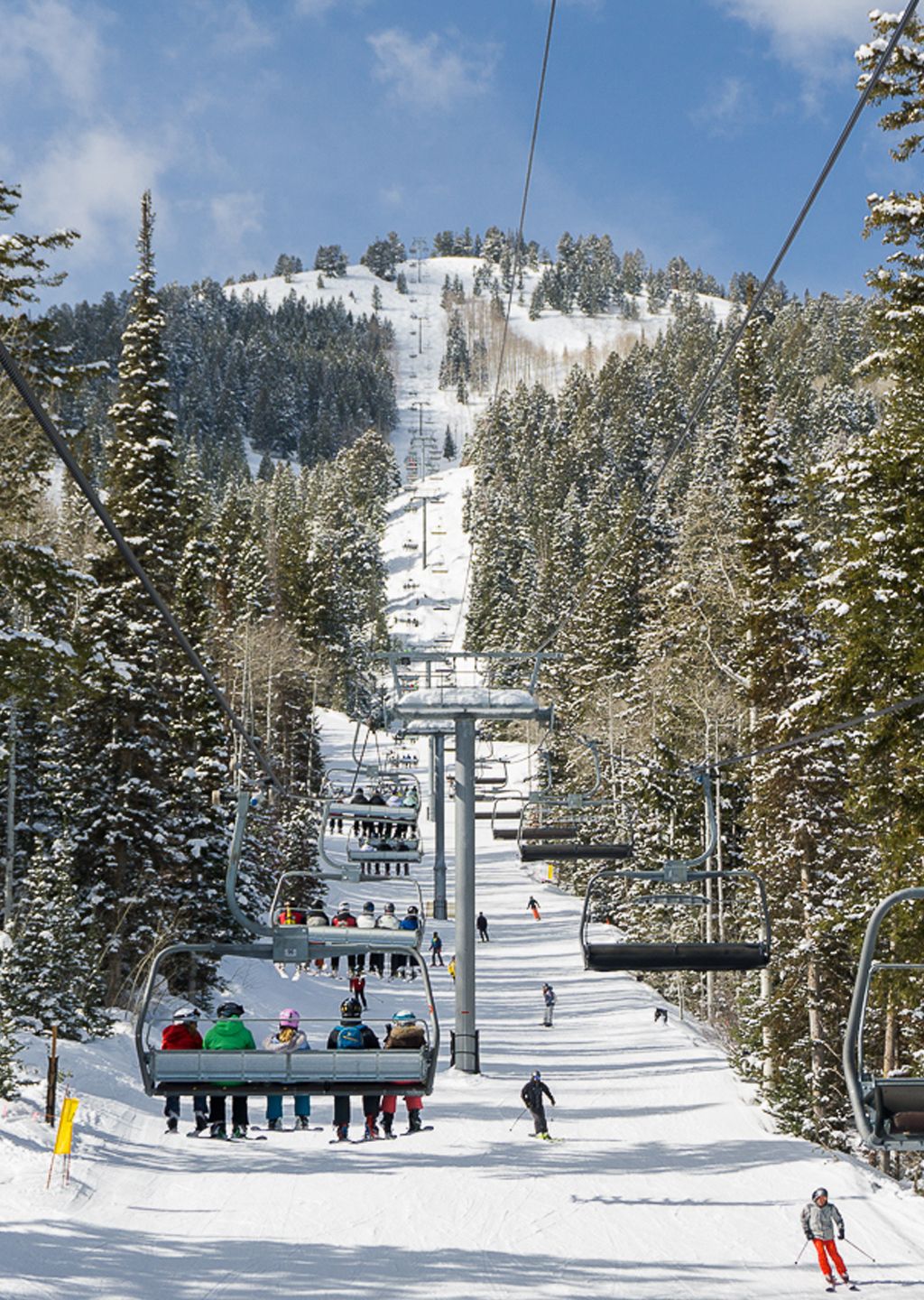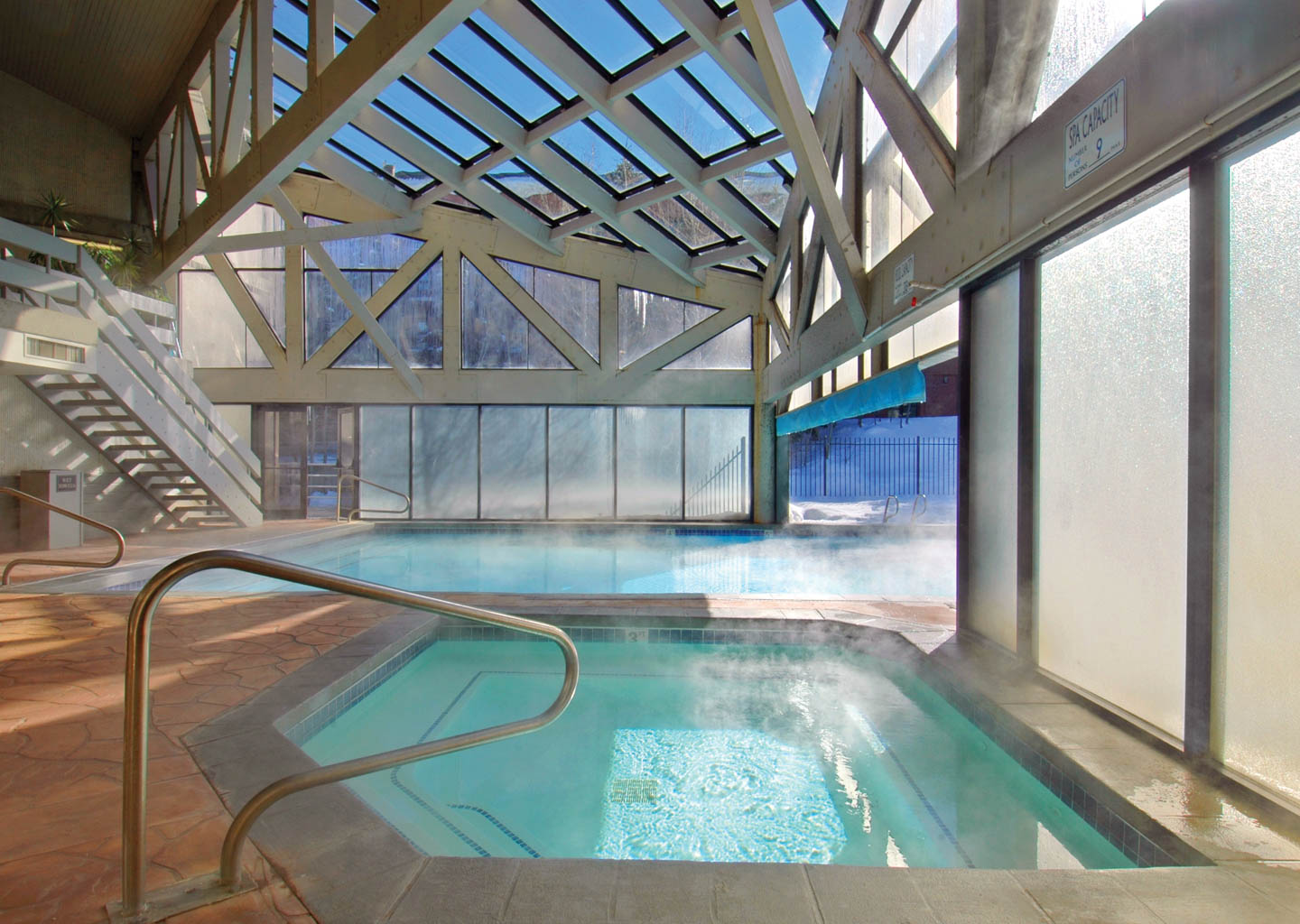The Scoop on San Diego Bike Sharing
The last few months have seen an unprecedented explosion of brightly-colored bicycles and electric scooters strewn across the streets and sidewalks of every corner of the San Diego-sometimes literally. You’ll see them along the beach in front of Capri by the Sea, propped near a tree in La Jolla, or on a sidewalk in the Gaslamp Quarter. What does this influx of freestanding vehicles portend? How do they work? And what are the downsides?
A Bit of History
While dockless bicycle and scooter rentals are a new phenomenon here in the States, it started several years ago as an experiment by the Peking University cycling club. They quickly started adding bikes to a shared rental pool, accessed via app, which allowed users to pick up, use, and leave a ride in a convenient manner. Eventually, the experiment became a company, called ofo, in 2015. More campuses, bikes, users, and cities across China were soon included in the exciting new movement, and, in 2017, the craze burst the boundaries of Chinese exclusivity to take in other destinations, including Singapore, Cambridge, Seattle, and Sydney. The expansion isn’t over. New cities regularly join forces to roll out ofo service in crowded urban centers and tourist destinations.
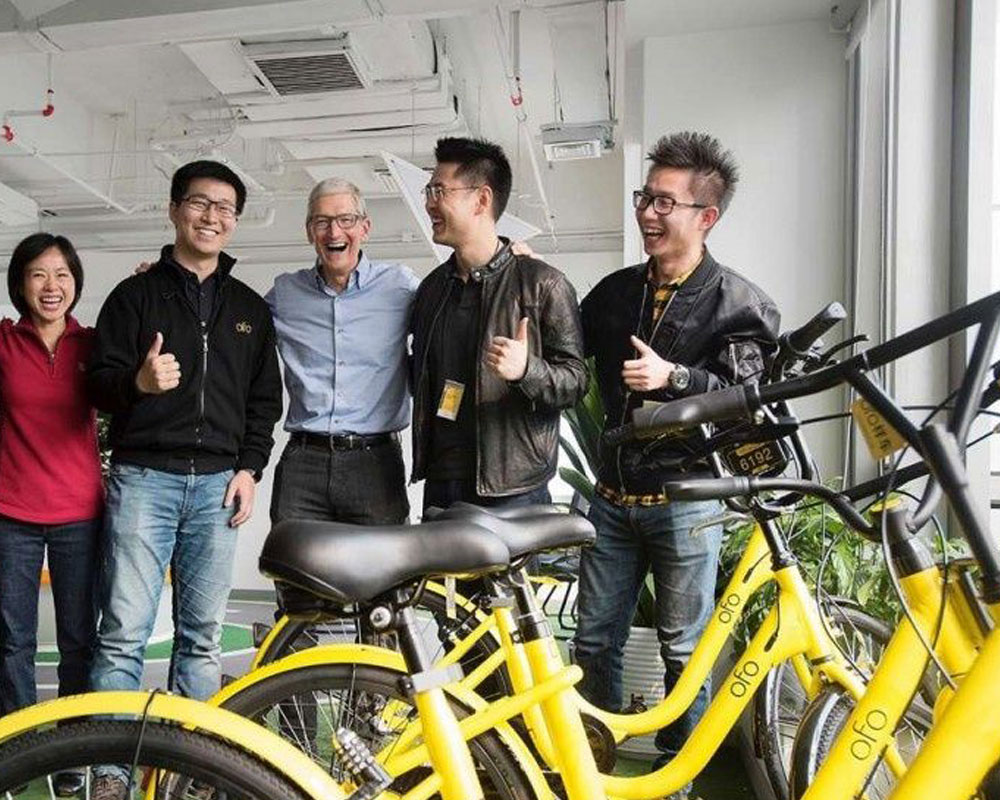
It all started in China. Photo courtesy of ofo.
Breakout innovations quickly spawn competitors, copycats, and successors, however, and ofo is hardly the only name in the game. In San Diego alone there are at least four dockless sharing services already, including Limebike, Mobike, Bird, and ofo, all of which are squeezing previously-operating docked bike service Discover Bikes (formerly DecoBike) out of the market through additional convenience. Nationwide and internationally, there are dozens of companies in fierce competition for market share in an emerging trade. Not everyone is a winner. At least three Chinese firms have folded in recent months, and no one is sure how the whole endeavor will shake out in the long run. But-for the time being, at least-dockless bike-sharing is a big deal in San Diego.
How it Works
The premise of dockless bike-sharing is relatively straightforward: you need to go somewhere and would like to use a bicycle to get there. These services provide bicycles. If you want to ride one, you need to download the app corresponding to the bike you would like to use. Create a profile, input your credit card information, and scan the bike’s code. Once verified, the bike’s lock opens, and you are free to ride. Go wherever you want to go for as long as you want with your new bicycle. To conclude your temporary ownership, simply end your ride either on the app or by sliding the bike’s lock back into place, and you are done. Your credit card is charged for the time you spent behind the handlebars, and the bike is ready for a new rider to come along and claim it from wherever you left it using the bike’s unique GPS locator.
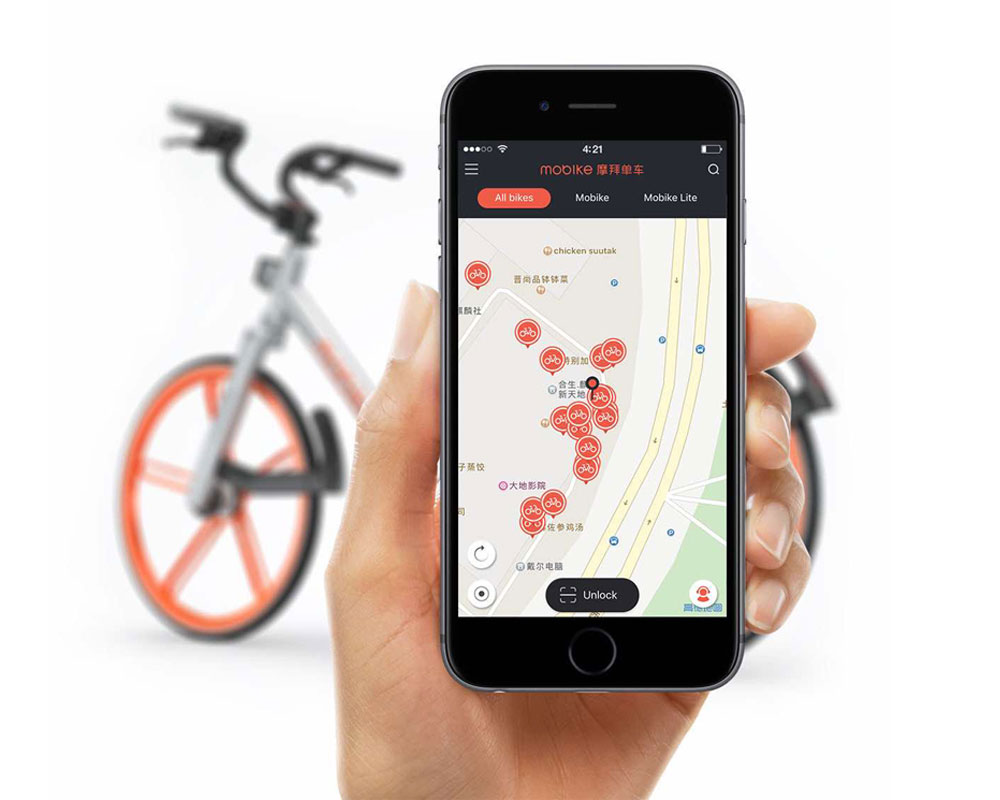
Phone, meet bike. Photo courtesy of Mobike
The Bad
This is new territory. While a small group of eco-conscious communities already experiment with docked bike-sharing services-including San Diego and Park City-the dockless version is a fresh idea. To a certain extent, that makes the entire enterprise a sort of wild west. Companies, users, and cities are all just coming to terms with what a laissez faire system of vehicular lending will end up looking like. There will be growing pains as everyone involved feels out the boundaries and grinds off the rough edges of an exciting development in transportation technology.
One of the primary headaches for consumers comes through the diversity of offerings. Monopolies are bad, across the board, and no one should advocate for less competition. But it can be a bit irritating-even overwhelming-to need four or more apps installed at all times, each with your credit card details, just to make sure that you can use the nearest bike or scooter. This is a quibble, but it could impact adoption rates overall.
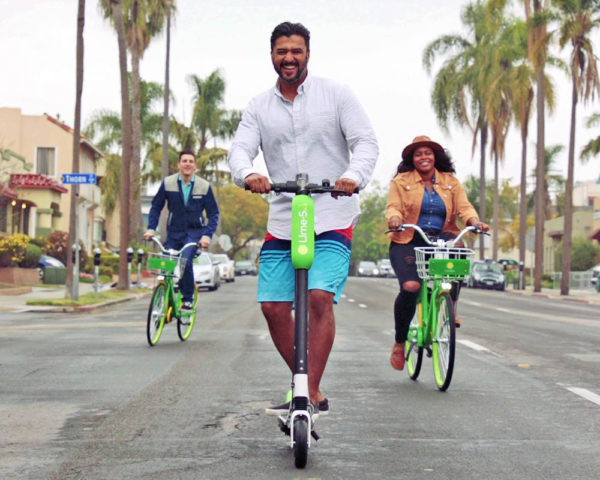
I just told you to wear a helmet! Photo courtesy of Limebike.
Additionally-though it seems silly to say-many Americans just aren’t all that accustomed to bicycling. Sure, you see plenty of diehards in Lycra rolling around the streets of your community, but they represent such a tiny fraction of the populace. The average consumer/commuter might be reticent to expand their transportation options to include whatever bikes may be laying around.
Those who do jump on the new trend may experience a period of… growing pains. A poor understanding of cycling traffic laws and a lack of skill and confidence while operating unfamiliar equipment on a shared motorway can be a deadly combination. Many dockless bike-sharing enthusiasts don’t exactly stick to safety gear regulations, either. Uncommon, indeed, is the user who carries around a bike helmet just for their rented bike ride.
The Ugly
Dockless bike-sharing has a people problem. Sometimes, people really, really suck. From mountains of used bikes piled inopportunely on sidewalks, parking lots, and private property to trashed cycles lying in drainage ditches, in the bay, up trees, and over streetlights, the careless jerks are kind of ruining it for everyone.
None of these services are particularly quick to remove bikes left blocking receiving bays, handicap access, thoroughfares, or entryways. And, without existing regulations and statutes on the books, there isn’t anyone to enforce any order on these seemingly-but-not-actually abandoned. Complaints are not uncommon regarding eyesores and inconveniences created by riders who finish their journey in the wrong spot.
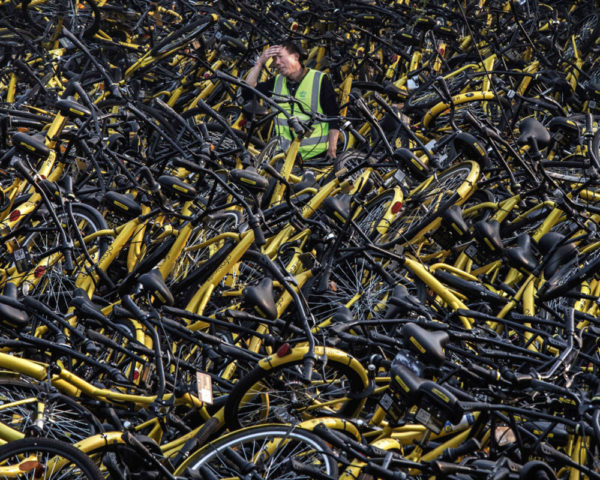
What is a guy supposed to do with so many bikes? Image courtesy of Kevin Frayer.
Then there are those who just want to watch the world-or at least the bike-burn. Abused, stranded, or otherwise misused bicycles cost companies money, decrease supply, and annoy the general populace. Service Gobee.bike had to pull out of France after the majority of their inventory was destroyed by vandals, and Chinese firm Wukong Bikes went belly-up after 90% of their stock was lost, destroyed, or stolen. Only time will tell if the very notion of sharing bicycles and scooters will survive in the face of humanity’s worst traits.
Only the Beginning

Where are we going? Nobody knows. Photo courtesy of Limebike.
Regardless of the future success, failure, or implosion of this nascent industry, it is currently an active and fascinating front in the discussion surrounding our changing lives in the face of accelerating technology and social capitalism. Whether you regularly grab a Limebike for your errands or you just shake your head at the pile of ofos and Mobikes outside your favorite coffee shop, this is only the beginning of San Diego’s adventure in sharing bicycles and scooters. Keep an eye out and make sure your voice is heard as public debate and government action develop.
Disclaimer: All Seasons Resort Lodging is not affiliated with any docked or dockless bike or scooter sharing system.
Related Articles
Things to Do During Park City’s Mud Season
Our Picks for Mountain Bike Rentals Park City
Deer Valley Ski Resort, Park City, Utah: An Overview
Park City Spring Break
